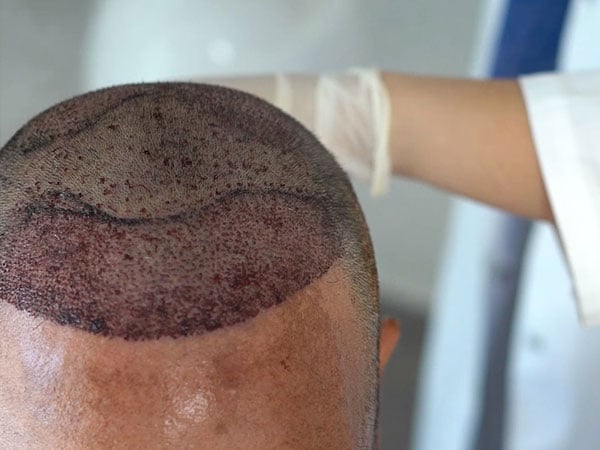One of the most important questions people ask before undergoing hair restoration is, "What are the risks of hair transplant surgery?" Understanding potential complications allows patients to make informed decisions, follow proper preparation, and minimize problems during recovery. Many users also wonder about scarring, infection, and long-term hair growth outcomes. Modern techniques have reduced risks, but awareness and careful planning remain crucial for safe and effective results.
What Is Treatment And How It Works?
Hair transplant in Dubai(زراعة الشعر في دبي) treatment is a surgical procedure in which healthy hair follicles are moved from a donor area, typically the back or sides of the scalp, to thinning or bald regions. The two main techniques are FUE (Follicular Unit Extraction) and FUT (Follicular Unit Transplantation).
- FUE: Individual follicles are extracted using small punches and implanted into recipient areas.
- FUT: A strip of scalp is removed, dissected into grafts, and then transplanted.
Users often ask, “Can the procedure go wrong?” While rare, complications can occur if aftercare is not followed or the procedure is improperly performed. Understanding how the treatment works helps in recognizing signs of potential issues and ensures the best outcomes.
Importance Of Treatment:
Hair transplant treatment is more than just cosmetic enhancement; it can significantly boost self-confidence and psychological well-being. Many patients ask, “Are the risks worth it?” When performed correctly, the procedure provides permanent hair restoration with natural-looking results.
Awareness of risks is essential because it encourages proper preparation, adherence to post-operative care, and realistic expectations. Minimizing trauma to the scalp and careful graft placement reduces the likelihood of complications and improves overall treatment success.
Types Of Treatment:
The two main types of hair transplant procedures carry different levels of risk and recovery considerations:
- FUE (Follicular Unit Extraction): Causes minimal scarring and is less invasive, reducing the chance of infection or prolonged soreness.
- FUT (Follicular Unit Transplantation): Involves a linear incision, which can increase the risk of scarring and a slightly longer healing period.
Users frequently ask, “Which method is safer?” Both techniques are safe when performed properly, but FUE generally offers fewer visible scars and a quicker recovery, making it preferable for patients concerned about aesthetic outcomes and minor complications.
Preparation And Aftercare:
Proper preparation and aftercare are essential to minimize risks:
- Avoid alcohol, smoking, and blood-thinning medications before the procedure.
- Follow scalp cleaning and washing instructions prior to surgery.
- Arrange assistance for the first 24-48 hours post-procedure if necessary.
Aftercare includes:
- Keeping the scalp clean and avoiding touching or scratching transplanted areas.
- Protecting the scalp from sun exposure, swimming, and strenuous activity for several weeks.
- Using prescribed medications to prevent infection or inflammation.
Many users ask, “What happens if I don’t follow aftercare instructions?” Ignoring guidelines increases the risk of infection, graft failure, scarring, and other complications, underscoring the importance of proper post-operative care.
Ideal Candidate:
The ideal candidate for hair transplant surgery is someone with stable hair loss and sufficient donor hair. Both men and women can benefit, depending on hair pattern and density.
Common questions include:
- “Can I undergo surgery if I have diffuse thinning?”
- “Does age affect risk levels?”
Candidates with healthy scalp conditions, no severe medical issues, and realistic expectations are less likely to experience complications. Proper selection and evaluation prior to surgery significantly reduce the chances of adverse outcomes.
How To Choose A Right Clinic?
Choosing the right clinic is critical for minimizing risks and achieving optimal results:
- Review verified patient testimonials and before-and-after photos.
- Ensure experienced staff and advanced equipment.
- Confirm that the clinic provides clear guidance for preparation and post-procedure care.
Users often ask, “Will a reputable clinic eliminate all risks?” While no procedure is completely risk-free, choosing a professional clinic with experienced staff dramatically lowers the likelihood of complications and ensures safer, more predictable results.
Risks:
While Hair transplant treatment(علاج زراعة الشعر) surgery is generally safe, potential risks include:
- Redness, swelling, or mild discomfort in donor and recipient areas
- Infection if proper hygiene or medication instructions are not followed
- Minor scarring, particularly with FUT
- Shock loss, which is usually temporary
- Poor graft survival if post-care is neglected
Awareness of these risks allows patients to follow instructions carefully, recognize warning signs early, and take preventive measures to ensure successful outcomes.
Benefits:
Despite potential risks, hair transplant surgery offers numerous benefits:
- Permanent, natural-looking hair restoration
- Improved self-esteem and confidence
- Minimal downtime, particularly with FUE
- Ability to achieve dense coverage for larger bald areas
When patients follow preparation and aftercare instructions, the procedure is generally safe, and benefits outweigh temporary discomfort or minor complications.
FAQs:
Q: How common are serious complications?
A: Serious complications are rare when performed in a professional setting.
Q: Can infection occur?
A: Yes, but proper hygiene and medication significantly reduce this risk.
Q: Will I have visible scars?
A: FUE leaves tiny dot scars that fade over time, while FUT leaves a linear scar that can usually be concealed under hair.
Q: Can hair loss recur after surgery?
A: The transplanted hair is permanent, but non-transplanted hair may continue to thin, requiring future procedures.
Conclusion:
Understanding "What are the risks of hair transplant surgery?" helps patients make informed choices, follow proper preparation, and adhere to aftercare instructions. While minor complications like redness, swelling, or temporary shock loss may occur, modern techniques and professional execution significantly reduce risks. Choosing the right candidate, procedure, and clinic ensures safe, natural-looking, and long-lasting results that enhance confidence and appearance.

